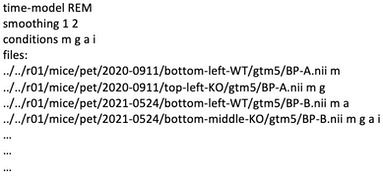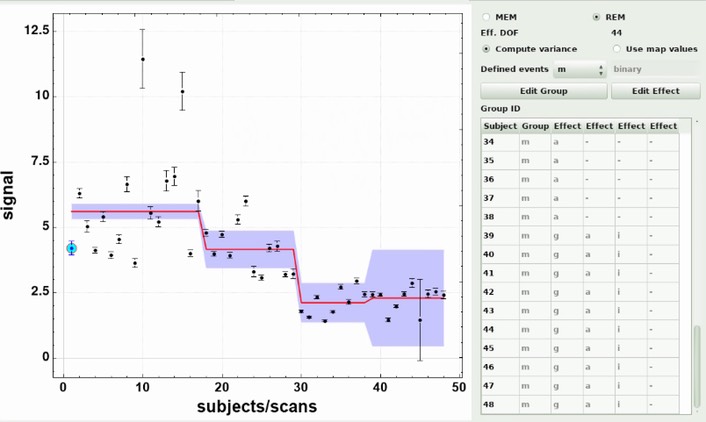
In most cases, the simplest way to determine a file format associated with time series analysis is to create a time model in fastmap and write results; this will guide further development of files with a text editor if that is desired. For the cross-subject analysis, however, it’s simplest to start directly with the time model control file using an editor. The format is relatively simple: list output from 1st-level fastmap analyses, together with identifiers for groups and effects. Every animal must belong to a group, which is the first specifier following the file name. After the group, one can include optional effects. In the example shown, there is a single for group for mouse (m), along with effects for pretreatment by amphetamine (a), genotype (WT or KO mouse), and the interaction between genotype and pretreatment. Conditions are analyzed for effect size and significance by GLM, with random-effects variance computed following the summary statistics approach by Worsley 2002 (A General Stastitical Analysis for fMRI Data).

Data can analyzed using a true random-effects analysis, in which the 1st-level variance plays essentially no role (except to weight the data points), or using a mixed-effects analysis, in which the random-effects variance is regularized by assuming that it follows the spatial pattern of the better-determined fixed-effects variance (this also boosts apparent degrees of freedom) following the Worsley approach.